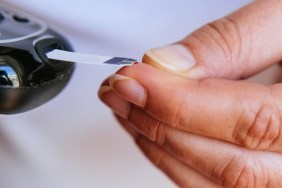When you’re having a baby there are so many expensive propositions thrown at you and we’re not just talking about the latest fancy crib or hiring a doula. From eating your placenta to stocking up on lactation cookies, none of us want to miss out on something that might help our baby and/or our own labor/delivery and recovery, but it’s not easy to separate what works from what doesn’t. Case in point: umbilical cord blood banking. It’s becoming increasingly popular, but the research is still iffy on the benefits, so we turned to Dr. Danielle Allen-Herried, OBGYN and expert at Testing.com, to find out if it’s actually something parents-to-be should consider.
Momtastic: What is cord blood banking?
Dr. Danielle Allen-Herried: Umbilical cord blood banking is the process of collecting blood from the umbilical cord following delivery of a baby, after the cord has been clamped and cut. It is then stored for future use due to the stem cells available in the cord blood. These immature stem cells can eventually differentiate into other blood cells and therefore have a potential life-saving benefit in certain cancers and genetic conditions. There is ongoing research for the use in regenerative medicine and infectious disease. Please refer see here for further information.
Momtastic: Does the research support the benefits?
Dr. Danielle Allen-Herried: At this time, routine collection of umbilical cord stem cells for private (family) cord banking is not recommended. There is potential benefit for directed donation- i.e. a family member with a condition that could benefit from umbilical cord stem cell transplantation. There is ongoing research for further usage of these stem cells for more indications. The research is done through public cord blood banks, which essentially is a donation process where the cord blood can be used by anyone in need.
Momtastic: What is the cost?
Dr. Danielle Allen-Herried: For public cord blood banking, there is no cost. You do not have access to use that cord blood in the future, it is for use in research and anyone who develops a disease with potential benefit from the stem cells. For private (family) cord blood banking, there is a collection cost to the patient/family from the company as well as a yearly storage fee. Generally, the collection fee is $1000-2000 and the yearly storage fee can vary depending on the company, generally $100-$500 annually.
Momtastic: How many people are actually doing it? Are you seeing it becoming more popular?
Dr. Danielle Allen-Herried: There are approximately 25 public and 25 private cord blood banks in the United States. It is unclear exactly how many parents are choosing cord blood banking given the different options available, as private companies are not required to release this information. Per The Parents Guide to Cord Blood Foundation, there are over six million cord blood units in private banks and almost 800,000 units in public banks. It would seem that banking is becoming more popular as more folks learn about the options and more research is underway.
Momtastic: Is there any downside besides ‘wasting’ money?
Dr. Danielle Allen-Herried: There is a chance that the umbilical cord blood is unable to be collected depending on certain factors at time of delivery and the availability of your delivering provider to collect the blood. There is a chance that the collection does not have an adequate number of cells to be beneficial. If you choose private cord blood banking, there is a large chance those cells will never be used, whereas if you donate the umbilical cord blood to a public bank, it will be much more likely to be used for transplantation and/or for research to find future benefits.








